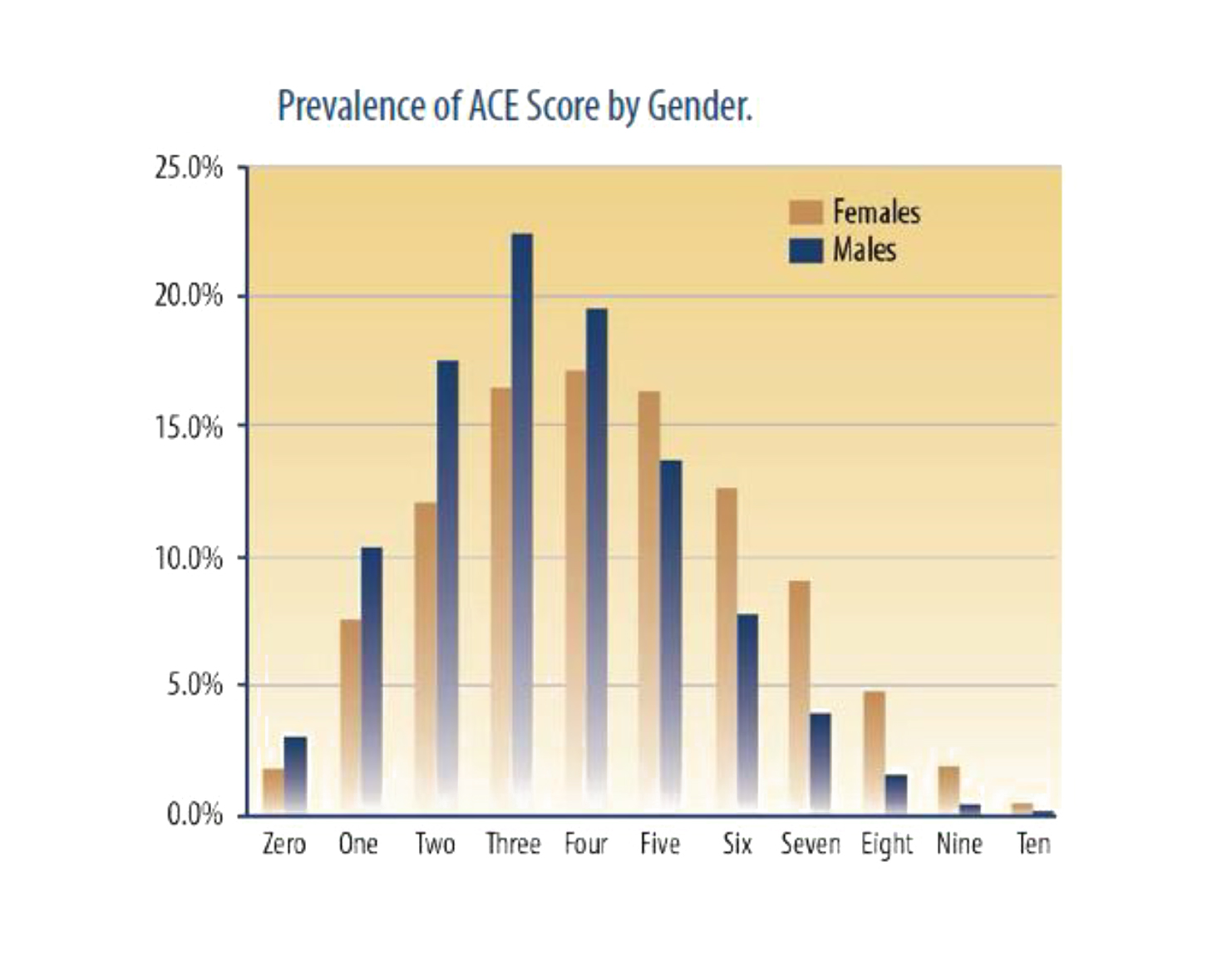Adjusting Our Lens: Ace Data Demonstrates a Case for Trauma-Informed Work with Youth

Research on adverse childhood experiences (ACEs) has great utility when making predictions on adult physical, social, and mental well-being and is useful in helping inform our national health policy goals. Recently, there has been a shift in focus to begin thinking about how this information can be applied to help shape social work and mental health prevention and intervention response strategies to promote overall better health (Larkin, Felitti & Anda, 2014).
The Adverse Childhood Experiences (ACE) Questionnaire consists of 10 questions. Respondents are asked to respond either “yes” or “no” to these questions to reflect whether during their first 18 years of life, they were exposed to any of the childhood experiences identified on the survey (see Figure 1). Responses of “yes” are provided a score of 1 and “no” responses are scored as zero. Scoring of the survey simply requires adding up the number of “1’s” to determine the total score. For instance, a score of two would mean that a youth has endorsed two of the 10 items.
Figure 1.
In a 2014 research brief by Sacks, Murphey, and Moore they summarized the prevalence of ACEs in our children in the United States. They report that, “just under half (46 percent) of children in the U.S. have experienced at least one ACE. In 16 states, a slight majority of children have experienced at least one ACE. In Connecticut, Maryland, and New Jersey, 60 percent or more of children have never experienced an ACE. In Ohio 50 percent of our children report zero ACEs, while 36 percent indicate having one or two ACEs; 14 percent of our Ohio youth report having three or more ACEs. The ACE scores of children involved in the child welfare system and/or the juvenile justice system present a much different picture with more concerning implications for their overall well-being.
In the Baglivio et al. study the prevalence of ACE scores in 64,239 Florida juvenile offenders were evaluated. Analyses indicate offenders report disturbingly high rates of ACEs and have higher composite scores than previously examined populations (see Figures 2 & 3).
Figure 2.
=”” figure=”” 3.[=”” caption]<img=”” height=”237″ 4.[=””>
Figure 5.
=”

The significance of the ACEs work being conducted across our country extends beyond simply gaining a deeper perspective of what individuals experience during childhood. In an effort to understand, perhaps one of the least understood populations in our child welfare/juvenile justice systems, we sorted the TVN data to include only those youth who were specifically involved in programming for problem sexual behaviors (i.e., identified as juvenile sexual offenders). This sample was comprised of 76 males. The average ACE score for this subsample was 4.4. From this perspective it makes sense to accept the notion that sexually abusive youth are not simply smaller, younger & less experienced versions of adult sex offenders. We recognize the need for a multi-faceted/multi-dimensional treatment because we know that young people we work with are complex and multi-faceted. We need to understand these youth (like other youth) from developmentally-sensitive and situationally-specific perspectives. Proper treatment planning and the assessment of “true risk” requires this (Rich, 2016). While both adult and juvenile offenders have engaged in similar behaviors, the behaviors are not necessarily attributed to the same causes and motivations. Our preliminary analysis using the ACEs data helps demonstrate the types of adversity our youth experience. Understanding the value of including trauma-informed work with our youth represents how we presently assess and treat kids in care. This perspective is of particular importance when working with youth from child welfare and juvenile justice systems.
Written by
Mark A. Welty, Department of Strategy and Innovation, The Village Network
Rebecca Miklos, Otterbein University
References
Baglivio, M. T., Epps, N., Swartz, k., Sayedul Huq, M., Sheer, A., & Hardt, N. S. (2014). The prevalence of adverse childhood experiences (ACE) in the lives of juvenile offenders. Journal of Juvenile Justice, 3 (2), 1-23.
Larkin, H., Felitti, V. J., & Anda, R. F. (2014). Social work and adverse childhood experiences research: implications for practice and health policy. Social Work In Public Health, 29(1), 1-16 16p. doi:10.1080/19371918.2011.619433
Rich, P. (2016). A Contemporary Approach to the Assessment of Risk in Sexually Abusive Youth. In D. T. Wilcox, R. Gray, M. Donathy,and C. Baim (Eds). Working with individuals who have committed sexual offenses (in press, 2016).
Sacks, V., Murphey, D., & Moore, K. (2014). Adverse Childhood Experiences: national and state-level prevalence. Child Trends, July, Publication #2014-28.